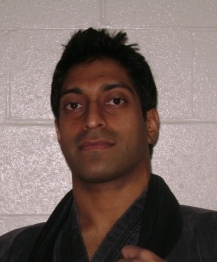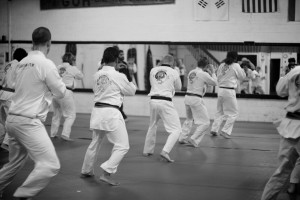Over the years as both a martial arts instructor and trainee, I’ve learned many valuable lessons to help my students learn martial arts, feel great, and ultimately be the best version of themselves. However, I think one lesson—possibly stands above all the rest.
It’s NOT a lesson about techniques, self-defense tactics, how to get strong or anything of the sort. In addition, it’s a LIFE lesson that can and should be used when wanting to accomplish anything. I certainly have used it as an entrepreneur, and I’ve come across countless others from kettlebell business clients of mine to my most successful mentors…
One of the benefits of training in martial arts for nearly three decades now, performing at a very high level on the collegiate tournament scene, operating the Dragon Gym for nearly 10 years and working with other martial arts and fitness professionals from all over the world is the opportunity to see so many successful and frankly so many wannabe martial arts students and instructors.
It’s been an “in the trenches” lesson in human behavior that has given me insight into the mindsets of those who “defeated the odds,” as well as those who just faded away accomplishing nothing, generally placing blame on the outside circumstances.
I’ve seen folks with the decks stacked against them, so to speak, become incredibly successful on the training floor, in the ring, or in the personal lives. Conversely, I’ve seen people with all the right things “on-paper”, athletic ability, financial resources…TIME…unable to take action and reach their goals be it physical, personal or professional.
What I’ve seen is the most successful people have the ability and willingness to work through tough times, change and uncertainty. These tough times can present themselves as roadblocks, plateaus, or even resistance from both people and circumstance, but those who achieve can somehow push through.
They stay on the path instead of taking a left turn every time there is a bump in the road.
That isn’t to say there isn’t need for course corrections, but as Dan John has famously said: “Plan the hunt, hunt, THEN discuss the hunt”
Then there are those who never seem to get anywhere. They simply go through the motions or, worse, bounce around from one program to another, chasing daily deals or looking for the instructor who will tell them what they want to hear. Many of these people have the perfect or near perfect scenario to achieve their goals—but they don’t.
What is the difference?
The second group hasn’t given themselves the permission to fail.
Why do we need permission to fail in order to reach our goals?
A few quotes come to mind:
- “A Black Belt is a White Belt than Never Quit”
- “Nothing Fails Like a Little Bit of Success”
- “You must know your limitations in order to transcend them”
Really, the second group doesn’t have the ability to put failure into context while the first group can see the big picture.
Part of this has to do with how our society is trending towards instant gratification. Everything is practically “on-demand” these days: entertainment, information, even food!
So, when we want to elicit change in ourselves, mental—physical—or—personal, many want to see those results immediately.
This is the second group of people. If they don’t “succeed” right away, if they face difficulty they jump off what seems like a rocky path in search of a smoother down hill one.
They see tribulation in the short term as failure and they think that is NOT OK.
This second group is getting much, much larger.
Conversely, the first group has, or seeks, the qualities that enable them to be successful. They realize that short-term obstacles or just that…short term. They’ve given themselves the permission to try and fail and try again.
Of course, “the magic” is in the try again part. A bump in the road is not the end of the road, or is it reason to get off the path to success. You need zoom-out in order see that every wall and every plateau are really just steps in a larger journey.
Obstacles, roadblocks, and failures are really just additional stimulus, inputs into the system that will help you move forward. They actually elicit change, growth…progress.
But, let’s face it: plateaus can seem dauntingly long and obstacles insurmountably high and when you are “in it” thinking about the big picture is not so easy. That’s when you have to remember that you are not alone. Do your best to surround yourself with people that will push you forward or pull you up, not crabs that will pull you down. Training partners are along side of you.
Their hand will be there to help you, but you must put yours out in order to take it. Think about that for a moment. Sometimes, you need to put your hand out to help others and that will take you to the next level.
If you want to fly with the eagles, you have to leave the nest. Take a chance on yourself, be OK with failure, and if you do miss your mark, you’ll have more information to work with so you can adjust your plan accordingly and keep moving forward. Besides, you only actually fail if you quit.
Sincerely,
Somnath Sikdar
Master Instructor



